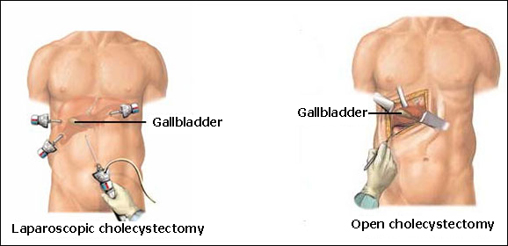

The surgery to remove the gallbladder is called a cholecystectomy (chol-e-cys-tec-to-my). The gallbladder is removed through a 5 to 8 inch long incision, or cut, in your abdomen. The cut is made just below your ribs on the right side and goes to just below your waist. This is called open cholecystectomy.
A less invasive way to remove the gallbladder is called laparoscopic cholecystectomy. This surgery uses a laparoscope (an instrument used to see the inside of your body) to remove the gallbladder. It is performed through several small incisions rather than through one large incision.
With laparoscopic cholecystectomy, you may return to work sooner, have less pain after surgery, and have a shorter hospital stay and a shorter recovery time. Surgery to remove the gallbladder with a laparoscope does not require that the muscles of your abdomen be cut, as they are in open surgery. The incision is much smaller, which makes recovery go quicker.
With laparoscopic cholecystectomy, you probably will only have to stay in the hospital overnight. With open cholecystectomy, you would have to stay in the hospital for about five days. Because the incisions are smaller with laparoscopic cholecystectomy, there isn't as much pain after this operation as after open cholecystectomy.
Complications may include bleeding, infection and injury to the duct (tube) that carries bile from your gallbladder to your stomach. Also, during laparoscopic cholecystectomy, the intestines or major blood vessels may be injured when the instruments are inserted into the abdomen.
All of these complications are rare.
